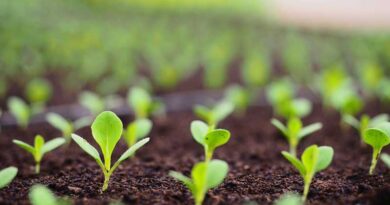Indian Small Farm Holders: Are the Heydays Nearby
Guest author: Dr. Suseelendra Desai, Dean of School of Agricultural Sciences and Technology SAST, NMIMS Shirpur
01 July 2022, New Delhi: Indian agriculture, dominated by small farm holders, faces innumerable socio-economic and cultural challenges right from pre-cultivation stage through marketing their produce. Be it pre- or post-independence era, the quantum of challenges remained the same though their forms changed.

As a country, we have moved on from a ‘begging bowl’ to ‘food sufficient nation’ and annual food grain production grew at 3% rate while population grew at 1.5% rate only. But still, India stands at 101 out of 111 countries. Despite huge claims by all Governments so far, there has not been a significant change in the plight of small farm holders. Indian agriculture is predominantly monsoon-driven and is highly vulnerable to weather vagaries. Though India is either number one or two for many produces by volume, most of the agricultural systems practiced are resource-intensive and less efficient in terms of productivity and post-harvest processing. Further, the farm size is so small that even doubling their income does not significantly improve their economic standing.
Challenges faced by small holder farmers
Some of the major challenges that the small holder faces are i) non-availability of quality inputs; ii) acute shortage of labour; iii) increasing costs of inputs; iv) lack of small farm mechanization tools; v) climate change and climatic variability impacts; vi) efforts to enhance productivity of the systems through better management; vii) ensure seamless flow of formal agricultural credit; viii) failure of extension system in hand-holding and dependable specific agro-advisory services; ix) unorganized marketing systems leading to gluts/shortages and exploitation; x) limited scope of crops under MSP and its poor implementation; xi) tough competition from global markets, and xii) failure of policy framework to reach up to the last needy.
While both agricultural research and extension make tall claims of successes independently, lack of coherence between them to domesticate the technology to suit to the agro-ecology and illiteracy of the majority of the farmers has led to a very low adoption rate.
One of the best examples is – though across the crops several hundreds of varieties have been released- when it comes to cultivation, they are only a fistful. And for these varieties also, quality seed is not accessible. Similarly, hundreds of research publications claim an enormous increase in crop yields due to new technologies. But, when it comes to their adoption, we do not see many on field. Here again, the best example is microbial inputs which constitute hardly 3% market even today.
To ensure that the Indian farmer marches further into the 22nd Century with his head held high, some short-, medium- and long-term remedial measures thus could be i) agro-ecology-specific crop planning with a focus on enhanced productivity per unit area and its operationalization in its true spirit; ii) revival of agricultural extension system and their scheduled knowledge upgradation; iii) moving the agricultural research from ivory towers to farms and fields; iv) developing functional formal knowledge networks in regional languages; v) basic research backstopping to sustain the technologies; vi) packaging of the technologies with timely financial support; and vii) functional farmer-centric insurance schemes. Soil and water being limiting resources, their judicious use for enhanced productivity should be emphasized.
The natural resource management technology ecosystem is often community-based and hence needs a different outlook and handholding for their adoption ‘as it is’. Integrated farming systems (IFS) has been shown to sustain the rural livelihoods. However, agro-ecology specific/regional models are yet to be fine-tuned and farm-demonstrated.
On the policy front, there is an urgent need for real-time crop booking database accessible to all stakeholders to plan for need-based contingencies well in advance. This can obviate the distress through timely intervention. This would also help for targeted delivery of the benefits of several schemes to the small farm holders. Multiple schemes could be consolidated and targeted delivery systems could be evolved using the modern IT tools. Parallel management of the agricultural issues by both federal and state governments, is another issue which needs a revisit.
Agriculture being the state subject and State Agricultural Universities are well-qualified and equipped to address state issues, it may be worthwhile to make the respective states fully responsible, with adequate financial and technical support by the Centre. Both state and federal research and extension systems should be fully integrated and the federal systems could play the role of a facilitator by complimenting the deficit areas. Through holistic addressing of the issues, the future Indian farmer could spread happiness to not only himself but to the entire nation.
Also Read: CNH Industrial Capital India commences Financial Literacy Program for farmers















